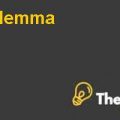DETAILED OUTLINE
“COUNTRY” REPORT
TOPIC: INTERCULTURAL COMMINICATION IN INDIA
PRIMARY PURPOSE: To inform Tanda Air’s CEO, company executives
about India’s way of life
SECONDAY PURPOSE: To reduce any intercultural communication uncertainties
AUDIECE: Jack Bauer, Tanda Air CEO
CENTRAL IDEA:
To inform Tanda Air’s CEO, executives and employees about proper business etiquette, food and clothing and class structure in India as well as to reduce any intercultural uncertainties they may encounter.
- I. Introduction
- 1. Tanda Air is looking to open a new branch in Muzaffarnagar, Uttar Pradesh, India by the end of August 2014. This report, which was assigned on Wednesday May 14, 2014, was done for the benefit of Tanda Air’s CEO, Jack Bauer and all of its executive employees. The positive transition into the new domain relies heavily on the successful and efficient completion of this report.
2. Employees will begin their departure for India within the first week of August. This will give them at least 2 weeks to settle in before the new branch opens.
- 1. To inform Tanda Air’s CEO, executives and employees about proper business etiquette, food and clothing and class structure in India as well as to reduce any intercultural uncertainties they may encounter.
- 1. Here are the sources and methods for the report. These are as follows:
- We used books from Conestoga College’s Library.
- We used Conestoga College’s online database.
- We used reliable web pages as well as online peer reviewed journals.
- II. Summary
- In summary, here are the key findings in each of our major sections.
- There is a big cultural gap in dining here as compared to dining in India, for example the use of a knife is not suitable in India; whereas here it is a very common utensil.
- There is also a different life/business style in India, such as clothing and foods.
- The Brahman caste is the highest status of the four social classes;
Brahmins must live by the strictest rules.
- The above are just one sentence summaries; however the full, in depth and detailed descriptions of the 3 major sections researched can be found below.
- III. Body
Our company’s employees need to understand the cultural differences in business etiquettes done in India.
- A. Cultural differences in Introductions
1. Our employees need to know and understand the cultural differences in meetings and greetings in India. They are as follows:
- Greetings
- In India it is a norm to greet people with both hands clasped together (Namaste).
- Handshakes are acceptable between similar age and rank employees as well as in urban areas.
- A male to male hug is inappropriate as is kissing the cheek of a woman.
- Introductions are much more formal in India
- Must be able to differentiate between first and last names.
- Use of titles, example Dr., Mr., Mrs., Sir, Madam.
- The exchange of business cards are much more formal
- Business cards should be exchanged in the first meeting.
- Should be handed with respect; not thrown.
- Neither necessary nor expected to have a Hindi version of your business card.
- B. Cultural differences in Body language
1. Our employees need to understand what is deemed appropriate and inappropriate in terms of proper body language in India.
- Facial expressions and actions
- A loose side to side head nod means “yes”.
- Eye contact is too direct. In western cultures, a strong and direct eye contact is considered positive, in India it is considered aggressive and offensive.
- Gestures
- Anything exchanged is done with the right hand.
- Use of left hand is considered unclean.
- Touching of the head is considered disrespectful.
- Pointing with your index finger is a big no in India. Instead, when pointing to an object or person use an open palm with all of your fingers grouped together.
- C. Cultural differences in dining practices
1. Finally, employees must learn the cultural differences in dining practices in India.
- Poor and offensive to share food
- Whether it be sharing a fork or a spoon, taking a bite from someone else’s sandwich or drinking from another’s glass or bottle is very inappropriate.
- Never offer anyone food from your thali(plate), even if the contents are untouched.
- Eating with hands should be something all employees learn how to do.
- If host party uses hands, it’s customary for the rest of /the guest to follow suit.
- Avoid using the left hand, as it is considered unclean.
- If utensils are not used, just use the first three fingers plus your thumb of your right hand.
- Other general customs in dining.
- Spouses can be included.
- Bringing gifts is considered appropriate.
- Offer a plausible excuse if you can’t make the gathering, never say no.
We will be able to successfully conduct business in India, once our employees understand India and Canada’s cultural differences in introductions, body language and dining practices in a business setting.
It will be easier to conduct the business in a successful manner in India, if the Indian and Canadian cultures and their differences in introductions, body language and dining practices in a business setting are explicitly defined to the employees of Tanda Air.
However, there are several other cultural aspects that should be known to the employees of Tanda Air before going to India because they follow certain specific practices in terms of food and clothing. The employees not only need to know about business etiquette but they also need to know the culture about foods and clothing. It is even more important to consider them because some types of food and clothing are ..........................
This is just a sample partial case solution. Please place the order on the website to order your own originally done case solution.









